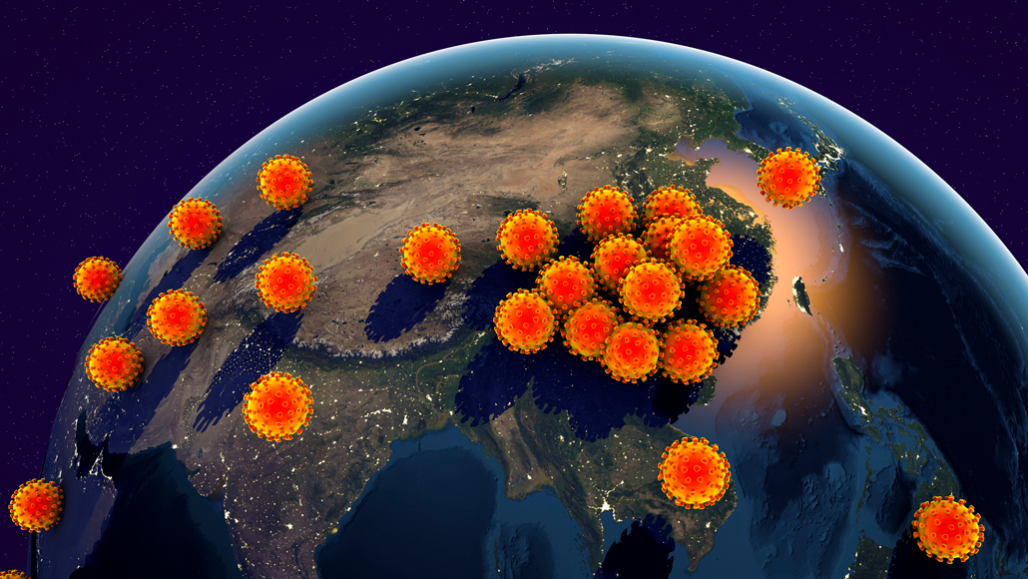continent: (in geology) The huge land masses that sit upon tectonic plates. In modern times, there are six established geologic continents: North America, South America, Eurasia, Africa, Australia and Antarctica. In 2017, scientists also made the case for yet another: Zealandia.
coronavirus: A family of viruses named for the crown-like spikes on their surface (corona means “crown” in Latin). Coronaviruses cause the common cold. The family also includes viruses that cause far more serious infections, including SARS.
COVID-19: A name given the coronavirus that caused a massive outbreak of potentially lethal disease, beginning in December 2019. Symptoms included pneumonia, fever, headaches and trouble breathing.
epidemic: A widespread outbreak of an infectious disease that sickens many people (or other organisms) in a community at the same time. The term also may be applied to non-infectious diseases or conditions that have spread in a similar way.
H1N1: A type of influenza virus that infects mainly swine. A few of the strains have developed the ability to spread in people as well.
infection: A disease that can spread from one organism to another. It’s usually caused by some type of germ.
influenza: (also known as flu) A highly contagious viral infection of the respiratory passages causing fever and severe aching. It often occurs as an epidemic.
morph: Short for metamorphosis, it means to change from one form to another (such as from a caterpillar to a butterfly) or from one shape to another. Or it can mean to evolve or mutate, where one or more parts of the genome undergo some sort of change in their chemistry — and potentially in their function. (in non-living systems) It refers to some thing, some policy or some activity that has undergone change, becoming something that looks or seems new and different.
novel: Something that is clever or unusual and new, as in never seen before.
outbreak: The sudden emergence of disease in a population of people or animals. The term may also be applied to the sudden emergence of devastating natural phenomena, such as earthquakes or tornadoes.
pandemic: An epidemic that affects a large proportion of the population across a country or the world.
population: (in biology) A group of individuals from the same species that lives in the same area.
risk: The chance or mathematical likelihood that some bad thing might happen. For instance, exposure to radiation poses a risk of cancer. Or the hazard — or peril — itself. (For instance: Among cancer risks that the people faced were radiation and drinking water tainted with arsenic.)
SARS-CoV-2: A coronavirus that emerged in Wuhan, China, in late December 2019. It would go on to cause widespread — and sometimes lethal — disease throughout China and many other nations. Its name reflects its close similarity to the original coronavirus known as SARS (for severe acute respiratory syndrome). That SARS virus sparked a global outbreak of disease in 2003.
strain: (in biology) Organisms that belong to the same species that share some small but definable characteristics. For example, biologists breed certain strains of mice that may have a particular susceptibility to disease. Certain bacteria or viruses may develop one or more mutations that turn them into a strain that is immune to the ordinarily lethal effect of one or more drugs.
strategy: A thoughtful and clever plan for achieving some difficult or challenging goal.
transmission: Something that is conveyed or sent along. (in mechanics) In a liquid-fueled vehicle, the machinery used to transfer power from the engine to the drive wheels. (In medicine) To spread a disease or toxic agent.
virus: Tiny infectious particles consisting of RNA or DNA surrounded by protein. Viruses can reproduce only by injecting their genetic material into the cells of living creatures. Although scientists frequently refer to viruses as live or dead, in fact no virus is truly alive. It doesn’t eat like animals do, or make its own food the way plants do. It must hijack the cellular machinery of a living cell in order to survive.
World Health Organization: An agency of the United Nations, established in 1948, to promote health and to control communicable diseases. It is based in Geneva, Switzerland. The United Nations relies on the WHO for providing international leadership on global health matters. This organization also helps shape the research agenda for health issues and sets standards for pollutants and other things that could pose a risk to health. WHO also regularly reviews data to set policies for maintaining health and a healthy environment.








